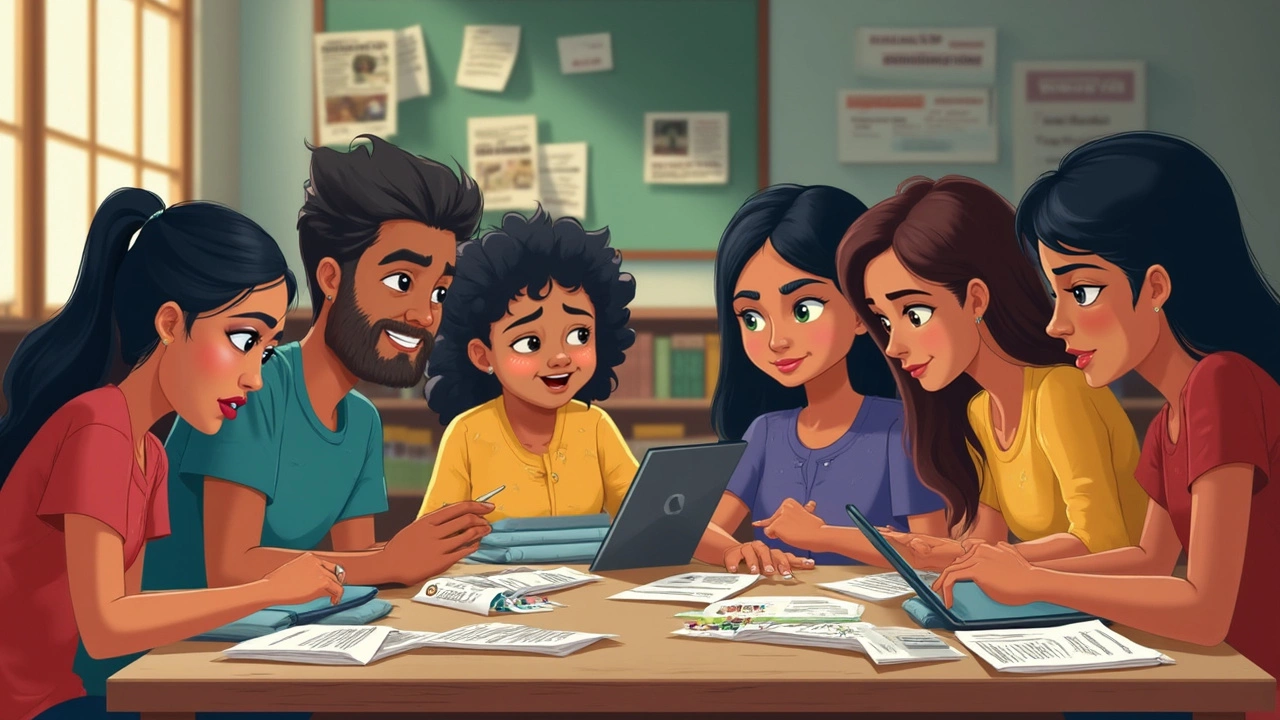May
29

- by Dhruv Ainsley
- 0 Comments
Teachers, students, and parents have probably noticed something big lately—schools are starting to break up with Google. Not long ago, Google Classroom and Google Docs felt like the obvious choice. They’re free, simple, and everyone already uses Gmail anyway, right? But now, districts and administrators are searching for something better, or at least different. Why? It’s not just one reason.
If you’re a teacher tired of clunky tools or a parent who’s been asked to sign yet another privacy waiver, you’re not imagining things. Some schools feel Google doesn’t play nice with student privacy, especially when it collects user data. Others are finding out that “free” doesn’t always stay free, especially once their needs grow or when ads and premium features show up out of nowhere.
When it comes to e-learning, schools want more than basic file sharing and assignment dropboxes. The world has changed since 2020. Kids learn in livestreams and messaging threads now. Teachers want easy grading, feedback tools, and tech that actually works on both a classroom laptop and someone’s old phone. Suddenly, Google isn’t the only game in town.
- Privacy Takes Center Stage
- Changing Price Tags and Hidden Costs
- The Hunt for Better Features
- Practical Tips for Schools Switching Platforms
Privacy Takes Center Stage
Let’s get real—parents and schools want to know exactly what’s happening with student data. More districts are pausing or ditching Google Classroom and G Suite because they’re not sure how much data is tracked, shared, or stored. In 2024, the state of New Mexico went so far as to sue Google, saying it collected personal info from students without proper consent. This caught the attention of schools everywhere. Others, like those in the EU, face tough privacy laws like GDPR. If you mess up, the fines can get scary fast.
Schools can’t risk it. That’s why student data privacy is becoming a top reason to rethink tools. Teachers have to follow strict rules, and it’s stressful not knowing how much information a platform collects. Things like names, email addresses, search history, and even what students click on get logged. It’s not just about ads—some worry data could end up in ways they never expected.
- Check if your platform uses student info for targeted advertising.
- Read the privacy policy—don’t just click ‘agree’. Find out who owns the data.
- Look for tools with end-to-end encryption or local data storage, especially if you’re working with younger students.
- Update parent consent forms to match changing tech rules.
Here’s a kicker: tech-savvy parents now check school tech choices. Some even pull kids from schools over privacy worries. If a district can’t guarantee data safety, trust crumbles fast. That’s why alternatives to Google Classroom and other big names are popping up, offering simpler privacy agreements and less data tracking. Privacy is now a key dealbreaker when schools pick their e-learning platform.
Changing Price Tags and Hidden Costs
Google’s stuff used to feel like a bargain for schools: zero dollars for Google Workspace for Education, which included Google Classroom, Docs, Sheets, and more. But over the last few years, things have changed. When Google rolled out Google Workspace for Education Plus, the company started putting a bunch of key features behind a paywall. You want advanced security, plagiarism detection, and in-depth analytics? Those come with a price tag now.
The numbers speak for themselves. A basic package is still technically free, but if a district wants the bells and whistles, it can cost $5 per student per year (for the Education Plus plan). It may sound small, but for a district with 10,000 students, that’s an extra $50,000 every year. Ouch. Here’s a quick side-by-side look at how costs and features stack up:
| Feature | Free (Education Fundamentals) | Paid (Education Plus) |
|---|---|---|
| Basic Docs, Drive, Gmail | Yes | Yes |
| Originality Reports | 5 per class | Unlimited |
| Data regions/advanced security | No | Yes |
| Live streaming within domain | No | Yes |
| Premium support | No | Yes |
And that’s just Google’s own fees. Many schools realized they needed add-ons for virtual classrooms, integrations with grading software, or parent communication tools. These pile up quickly. Plus, the free service still comes with “soft” costs—teachers spending extra time managing awkward workflows, or IT teams locked into supporting only Google-friendly devices.
Here’s a pro tip: Before jumping onto a platform just because it’s “free,” take a hard look at the roadmap. Ask what features are locked away now and which ones might move behind a paywall later. Check if there’s a limit on student accounts, file storage, or support. And always factor in hidden labor and training costs that might sneak up after the first term.

The Hunt for Better Features
Schools want more than just the basics these days. Sure, Google lets you share docs and set assignments, but most teachers say the platform feels pretty bare-bones. That’s why you’re seeing schools swap Google for platforms like Canvas, Schoology, and Microsoft Teams, which pack in way more tools for real classroom problems.
The demand for built-in gradebooks is huge. Teachers want to track scores, give quick comments, and report progress without flipping between apps. Canvas, for example, offers super-detailed grading tools and analytics right inside the platform—no extra plug-ins needed.
- Learning management systems (LMS) like Schoology natively handle quizzes, rubrics, and parent messaging. Google makes you mix and match with add-ons.
- Microsoft Teams stands out with its deep integration with Office tools (Word, Excel, PowerPoint), so teachers can run live lessons, share files, and even call parents—all from one dashboard.
- Schools say easy video lessons are a must, especially after COVID-19 forced remote learning. Google Meet just doesn’t compare to platforms with breakout rooms, hand-raising, and attendance tracking built in.
Switching isn’t just about flashy features, either. Schools want stuff that works with different devices, especially Chromebooks, iPads, and good old family smartphones. Some tools, like Seesaw for younger kids, are designed so even first graders can send a drawing or record a voice note without help. That’s real-life usability.
Here’s a quick look at what schools are prioritizing now, based on a 2024 EdTech industry survey:
| Feature | % of Schools Wanting It |
|---|---|
| Easy Grading & Analytics | 82% |
| Built-in Parent Communication | 77% |
| Better Live Video Tools | 74% |
| Seamless Mobile Access | 69% |
| Personalized Learning Paths | 66% |
So when you hear about a district ditching Google, it’s not just because they want something new. Schools need e-learning platforms that fit real-world classrooms and bring back time for actual teaching—not endless tech troubleshooting. That’s why Google Classroom faces stiff competition from platforms designed around teachers, students, and parents—not just Silicon Valley engineers.
Practical Tips for Schools Switching Platforms
Thinking about ditching Google for your school's digital learning? It sounds big, but plenty of schools have pulled it off with less drama than you might expect. A smart switch starts with clear priorities and avoiding common pain points.
- Google Classroom isn’t the only option: Investigate platforms like Microsoft Teams for Education, Canvas, or Schoology. Each offers unique features—Teams has built-in video calls and works well with Office documents, while Canvas is strong on customization and mobile.
- Start with a pilot: Before rolling out a new platform across your district, let a few classes test it for a semester. You'll spot tech hang-ups early and get honest feedback from real users, not just IT people.
- Check privacy policies, not just features: Some platforms make big promises about data security but bury loopholes in fine print. Look for clear statements about student data—no ads, no tracking, and easy opt-outs. Many European schools, for example, switched away from Google to stick to GDPR rules and found data protection much easier on alternatives.
- Train staff (and offer tech help for parents): Teachers need hands-on demos, not long manuals. Make time for live Q&A sessions—and don’t forget to support parents who may struggle with logging in or navigating portals from home.
- Think about device compatibility: Whatever you choose should work on Chromebooks, iPads, Windows laptops, and old smartphones. It’s a headache if a platform misses out on one group’s devices.
- Plan the move: Good transitions mean exporting old assignments and files, setting up new logins, and giving everyone a roadmap for day one. Don’t suddenly cut off access to the Google stuff—give students and teachers time to download or transfer what they need.
- Budget for the long haul: Sometimes “free” isn’t really free. Look for hidden costs, like fees for extra storage or premium support. Canvas, for example, charges for certain integrations, while Microsoft’s pricing might depend on your school size. Lay out every cost up front to dodge surprises later.
Switching e-learning platforms isn’t an overnight job, but if you prep right, it doesn’t have to be chaos. Listen to students, teachers, and parents. Keep everyone in the loop—that's what separates a smooth change from a giant tech headache.





